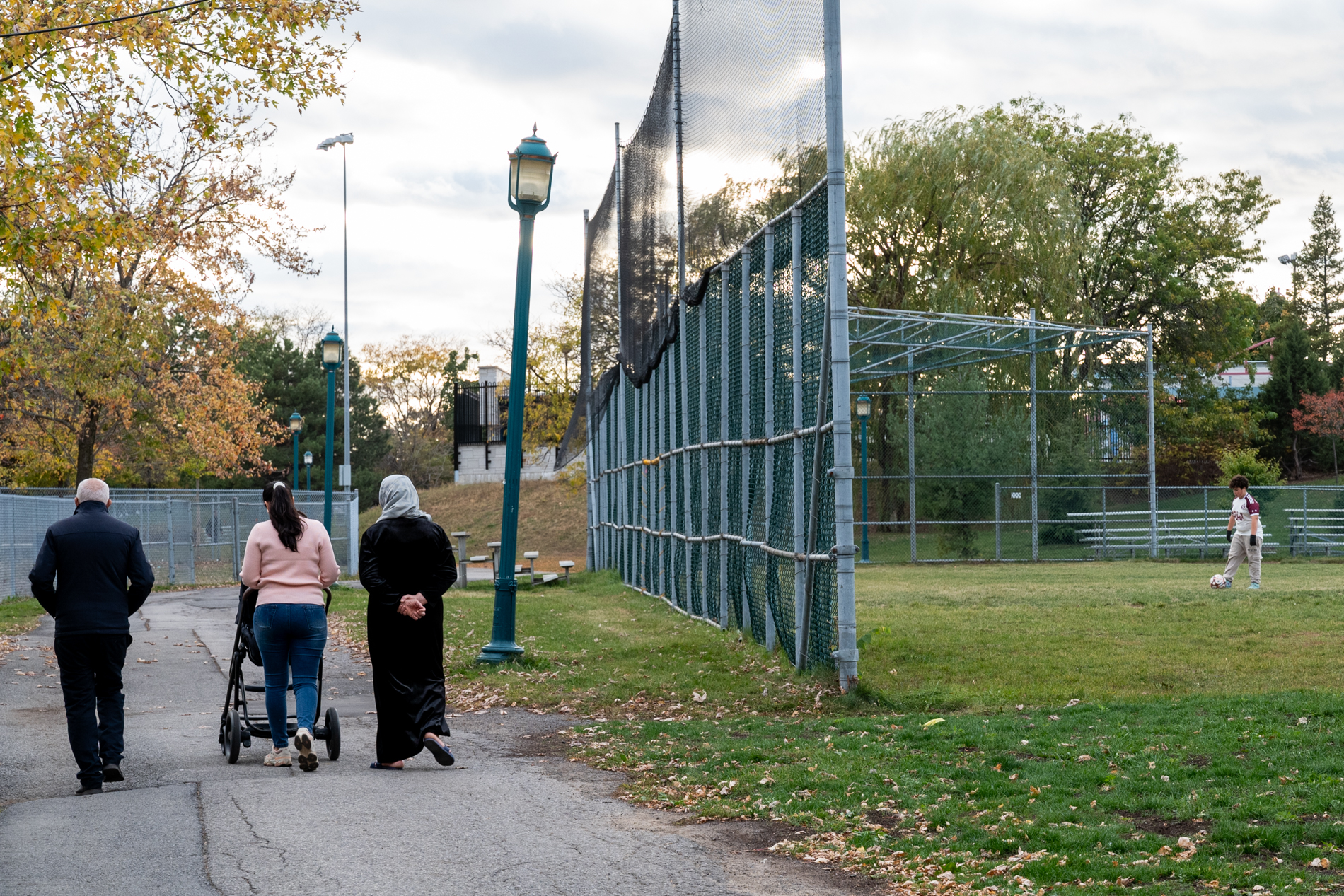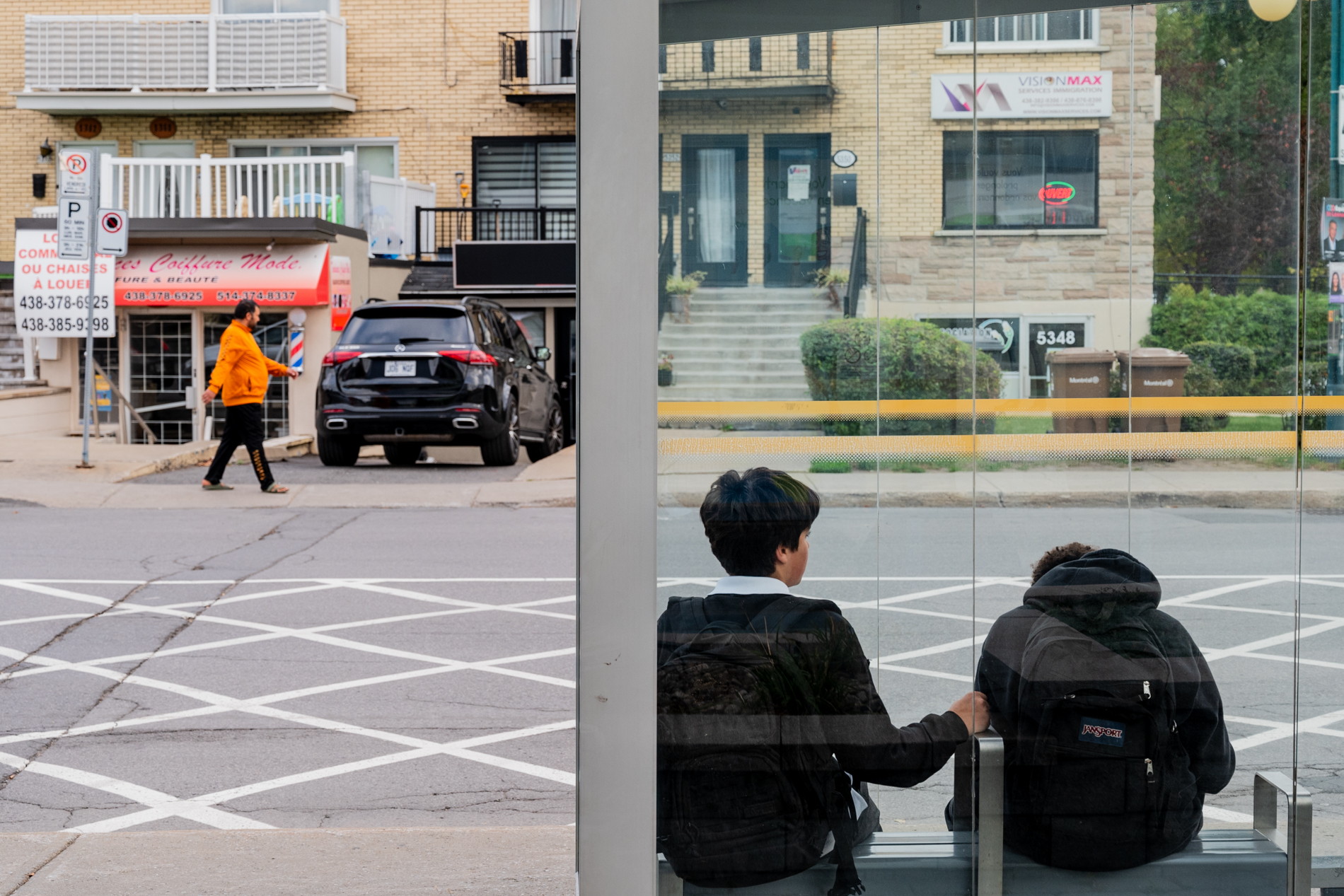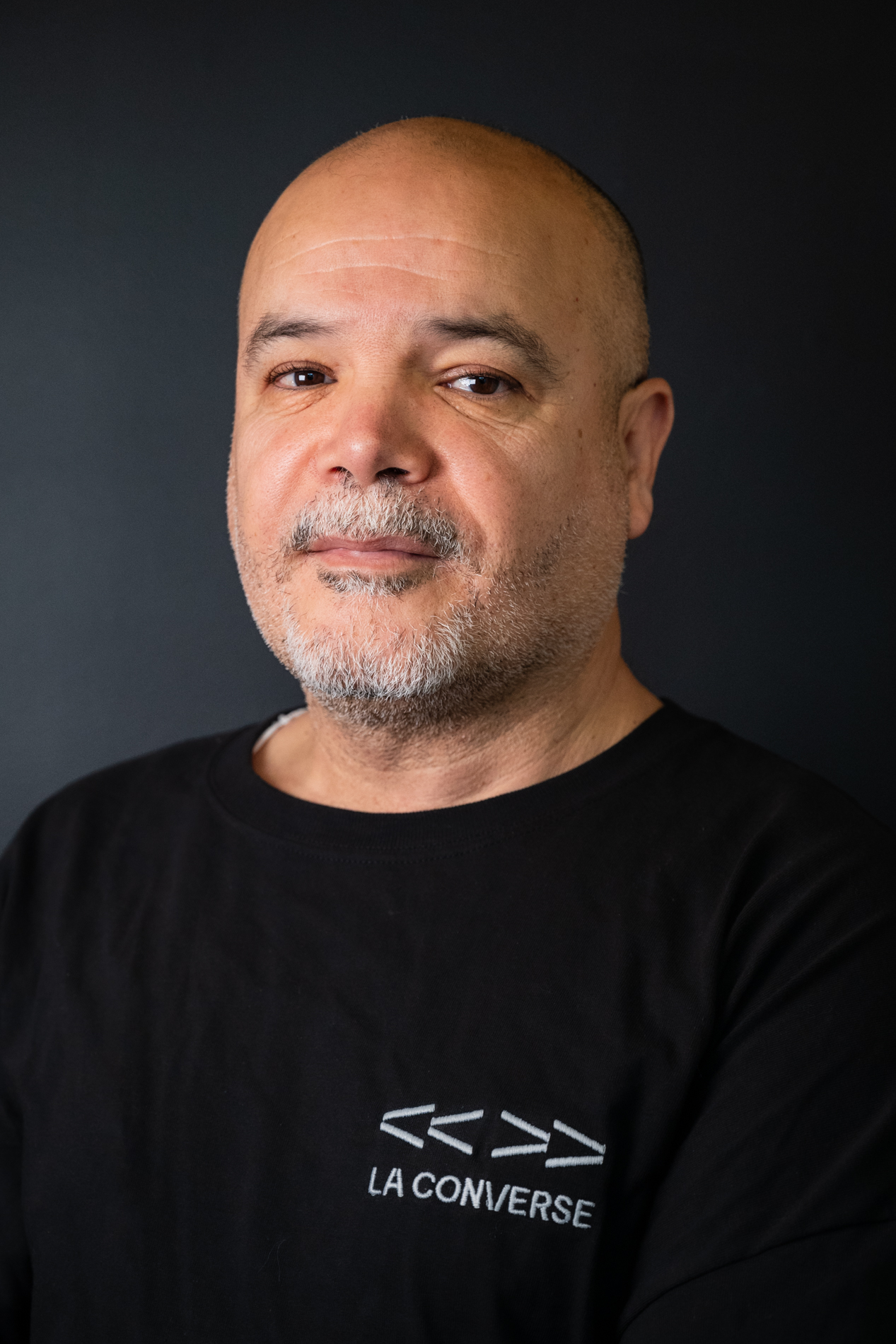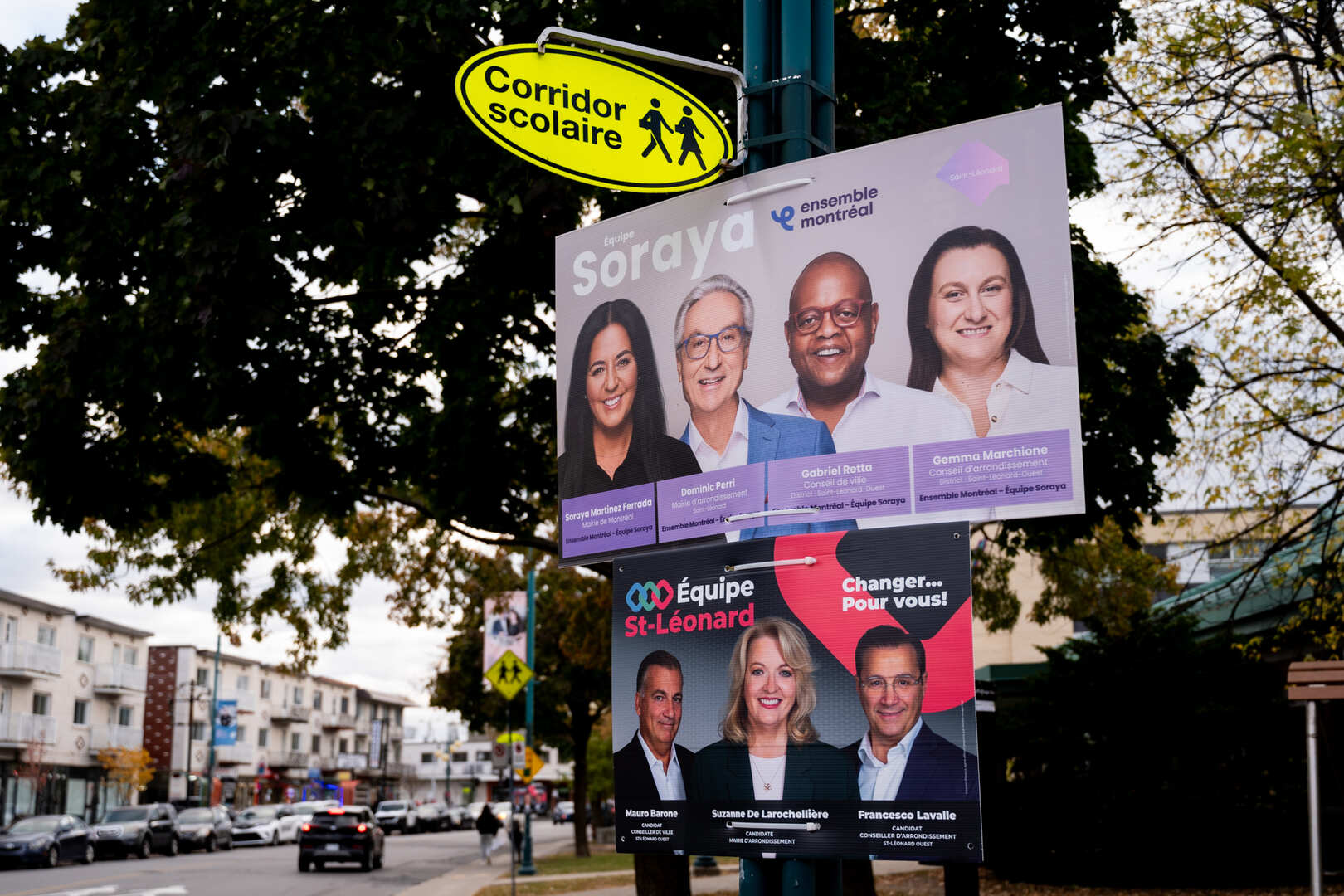In Saint-Léonard, youth safety and civic participation within the Maghreb community have emerged as central issues in the 2025 municipal campaign. While the community forms the majority in the borough, it remains underrepresented politically and faces a dual reality: growing concern over violence affecting its youth and difficulty making its voice heard in public debate. These elections could expose the tensions of a borough caught between fear, engagement, and the quest for recognition.
Langelier, Lacordaire, Jean-Talon East – Along the main streets of Saint-Léonard, election posters display the names and faces of candidates vying for the municipal election on November 2, 2025. For the first time in nearly 20 years, the borough will elect a new mayor, as Michel Bissonnet steps down after a long tenure. The timing seems perfect for renewing the political landscape in a neighborhood undergoing demographic change.
Behind the party colors and campaign slogans, one concern dominates local conversations: youth safety. In recent years, the neighborhood has been shaken by armed violence, with tragedies that claimed several teenagers—including Meriem Boundaoui, Mehdi Moussaoui, and Yanis Seghouani—leaving deep scars.
The Maghreb community represents the largest portion of the borough’s population, with over 20,000 residents, the majority of Algerian origin. Yet only three candidates from this community are running in the current elections. This limited political representation compounds chronically low civic engagement: the voter abstention rate in the 2021 municipal election was over 62%, a phenomenon highlighted, among others, by the local borough council.
Parental Fear and the Urgency of Targeted Dialogue
Among civic voices, Nabila Bouchala speaks out strongly. A resident of Saint-Léonard for six years, sociology lecturer at UQAM, and mother of a teenage girl, she experiences daily the weight of a diffuse threat. “There are gangs recruiting, even going to Saint-Exupéry high school to lure young people. Before, they recruited 15-year-olds. Now it’s even younger: 14, 13, 12!” she exclaims. Parents are terrified, especially as gangs have recently begun targeting young girls as well.
Bouchala points out that despite the community’s size, available support and socialization structures are insufficient: “There’s a lack of spaces where people can express themselves, where they can see themselves reflected in forms of participation or civic engagement. There’s a real lack of guidance.”
Moreover, she argues, government and borough initiatives to protect youth and promote integration remain ineffective as long as the approach is superficial: “We haven’t really tried to understand the problem from the inside. […] There haven’t been sufficient sociological studies or surveys to understand the phenomenon. We have a broad, meta-level vision of the problem.” Without tailored structures, recruiters exploit adolescents’ need for belonging, she concludes.
The problem is also compounded by deep mistrust of institutions. “Elected officials only come around during elections,” Bouchala laments, also citing “a disconnect with schools” and “constant anxiety around child protective services (DPJ),” which many parents perceive as a threat capable of taking their children. In the absence of dialogue, these fears feed negative perceptions on both sides: “When neither party communicates, when there’s no space for expression, it’s clear people rely on their assumptions about the DPJ,” she says. “And on the other side—officials and schools—they too maintain negative perceptions, not all but many, of immigration.”
For Bouchala, the next municipal council must “involve parents and young people who are part of the problem so they become part of the solution.” This requires an approach tailored to the population’s specific characteristics, particularly its strong oral culture. Future elected officials should “prioritize local engagement to build strong relationships and strengthen political literacy and civic participation.”
Restoring Trust: A Central Challenge of the Municipal Campaign?
Hadjira Belkacem, a community figure and coordinator of the Quebec Muslim Burial Association, refuses to reduce youth violence to Saint-Léonard alone: “Gangs move around. This problem exists throughout Quebec, even Canada. But because Saint-Léonard is majority Maghreb, the label sticks to one community.” This stigmatization prevents bridging the gap between citizens and institutions. “Politicians only show up during election time. […] Resources exist, but they don’t work. […] The same strategies yield the same results,” she laments.
Moreover, “many families want to leave; it’s become unbearable,” Belkacem warns. Her frustration reflects deep fatigue: “Here, we have to fight for everything: school, hospital, police, DPJ,” she says, describing daily life weighed down by exhaustion and the rise of anti-Muslim rhetoric: “We are tired. We didn’t come here to fight.”

Whether speaking as mothers or community leaders, Bouchala and Belkacem paint the same picture: a stigmatized community, anxious for its youth, and mistrustful of the institutions meant to protect it. “Between politicians and the reality of everyday people, there’s a rift,” adds Belkacem.
Growing Up Without Space: Youth Seeking Their Place in Saint-Léonard
At 19, Marwa* speaks calmly, but her words reflect a clear-eyed reality: young people in Saint-Léonard lack places to gather. “There aren’t really any spaces where young people can meet, do activities, or just hang out without being on the street,” she explains. Born in Canada to Maghreb parents, she attends a youth center in Saint-Michel—a neighboring area—due to the lack of similar facilities in her own neighborhood. “It’s a shame, but if something like that existed in Saint-Léonard, I’m sure many young people would be interested. It could create a dynamic, get youth off the streets.”
This structural void aligns with findings from Thi-Thanh-Hiên Pham, Nathalie Boucher, and Étienne Perrault-Mandeville in their study Être jeunes au bon endroit ? Cartographie critique des espaces négatifs pour les jeunes à Saint-Léonard (Montréal). They describe a fragmented territory, with some areas “isolated, poorly served, and lacking public amenities.” These zones become “negative spaces,” where “isolation reinforces the perception of a blocked future.”

For many adolescents, the street becomes a substitute for failing institutions: a space for belonging and recognition, even at the risk of falling into delinquency.
Findings from the Citizen Forum on Urban Safety, organized in February 2025 by Concertation Saint-Léonard, echo this conclusion. Participants—parents, youth, organizations, officials, and police—stressed the urgent need for “safe and attractive spaces” for young people. Among six priorities, they highlighted “creating socialization spaces for adolescents” and “repairing the link between institutions, schools, and families.”
Mélissa Allache’s testimony concretely illustrates these expert observations: in Saint-Léonard, the lack of adapted spaces fuels not just boredom but weakens belonging and widens the gap between youth and institutions.
Two Voices for a Community Seeking Representation
In Saint-Léonard, three Maghreb-origin candidates stand out: Arij El Korbi (Ensemble Montréal), Abdellah Azzouz (Projet Montréal), and Amina Bahri (Équipe Saint-Léonard).
Arij El Korbi, the first elected Maghreb-origin representative in Saint-Léonard, elected in 2021, seeks a new term as borough councillor with Ensemble Montréal. She advocates a prevention-focused, locally anchored approach. Her platform proposes expanding partnerships with community organizations for youth programs and strengthening police patrols that monitor parks from spring to fall.
Beyond these “traditional measures,” she recognizes that “what can really make a difference is unlocking living spaces,” because Saint-Léonard “unfortunately has much less municipal space for citizens.” She hopes the extension of the Blue Line metro, set to open in 2031, will bring “a community center and sports fields for youth—spaces they can truly claim.”
Abdellah Azzouz represents a new political generation. Arriving in Quebec as a child and a longtime community worker, he intimately knows the realities of Saint-Léonard youth. “Saint-Léonard wasn’t a poor neighborhood. It is becoming one, and the infrastructure hasn’t kept up,” he notes. Lack of suitable spaces deepens the sense of exclusion: “We need independent spaces, not tied to schools, home, or places of worship—places where young people can do what they want and feel valued.” His program emphasizes long-term support for community organizations, independent youth centers, and collaboration between schools, police, parents, and workers. “We shouldn’t point fingers, but build bridges. Young people want to be heard, just like their parents,” he summarizes.
Amina Bahri, a school educator for over 20 years and mother of a daughter, runs with Équipe Saint-Léonard. She highlights her integration journey and experience with neighborhood families. Focused on social cohesion, she aims to “build bridges between different communities to create a single, strong, and prosperous one.” In her campaign, urban safety and citizen services are top priorities, along with “listening to needs and simplifying life for families and seniors.”
Despite mistrust, fatigue, and wounds, change seems to be stirring in Saint-Léonard. Youth voices and civic reflections are gradually shaping a community that is starting to make itself heard. Whether the next municipal council will listen remains to be seen.
*Pseudonym





.jpg)
.png)
%20(3)%20(2)%20(1)%20(1)%20(1)%20(1).jpg)
.jpg)